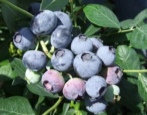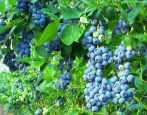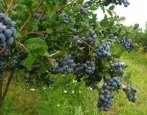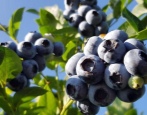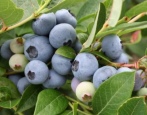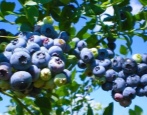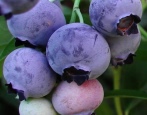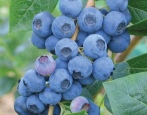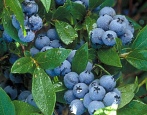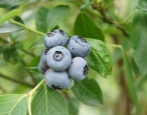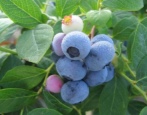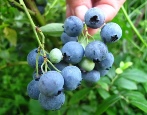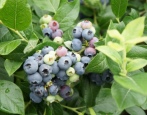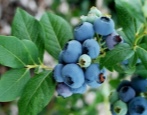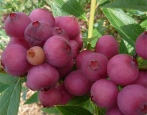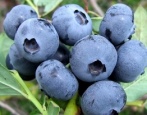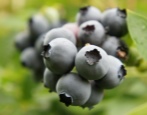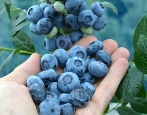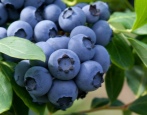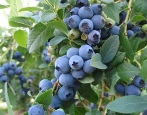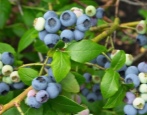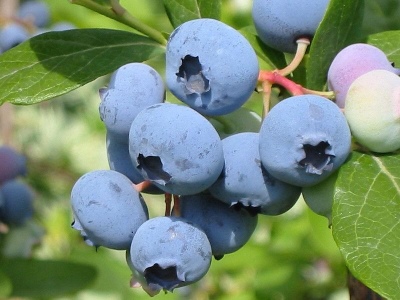
- Authors: New Jersey (USA)
- Appeared when crossing: (Jersey x Pioneer) x (Stanley x June)
- Year of approval: 2018
- Ripening terms: mid-season
- Growth type: medium-sized
- Bush height, m: 1,5-2
- Taste: sweet, slightly sour
- Yield: high
- Average yield: 158 kg / ha (6-9 kg per bush)
- Fruit size: large
Blueberry Bluecrop is the reference blueberry variety. The plant was bred a long time ago, but it still remains an outstanding achievement in the breeding of this culture.
Breeding history
The variety was bred in New Jersey (USA). Among the parents of the variety: Jersey (Jersey), Stanley (Stanley), June (June), Pioneer (Pioneer). It took 7 years of painstaking work to create the variety, from 1934 to 1941. Breeders have evaluated and screened over a thousand specimens. The variety went on sale in 1952. Blukrop was included in the Russian state register of varieties in 2018.
Description of the variety
The bush is active, vigorous, of medium height, 1.5-2 meters, with straight, compactly collected branches. Shoots are smooth, green, slightly curved, leaves are smooth, oval, with shine. The flowers are white and appear at the end of May. The berries ripen 1.5-2 months after flowering. The bush of the Bluecrop variety is very beautiful, such a plant will look great even in purely decorative mixborders. In the fall, its leaves turn a stunningly bright red. You can grow it in a container culture, with proper pruning, it will be small and neat, and during the fruiting period it will also be no less spectacular than flowering potted plants.
Fruit characteristics
The berries are impressive. Very large, each berry weighs almost 2 grams, and reaches 1.9-2 cm in diameter. The berries are round, with a typical blueberry ring below, dark blue, with a thick bluish bloom. The pulp is light green, juicy and firm. The skin is dense and elastic, with pubescence, medium in thickness. The berries are collected in long clusters. They are not prone to cracking, lie well and tolerate transportation.
Taste qualities
Dessert taste, sweet, with a slight sourness and delicate aroma. Berries are great on their own and in fresh dishes. They can be used to decorate mousses, ice cream, pastries. Berries are suitable for all types of processing and canning: multi-fruit juices, compotes, mashed potatoes, assorted varieties, marmalades, marshmallows and preserves. And also this blueberry can be saved for the winter, frozen or dried.
Ripening and fruiting
A variety of medium ripening. The harvest ripens at the end of June, but in some regions the berries can be picked in June - early July. Fruits appear on the shoots of the last and the current year, are not prone to shedding. Mechanical harvesting is possible. The yield period is long - 18-25 days.
Yield
The yield is high, on average up to 9 kg from 1 bush, from 1 hectare you can get 158 centners, these are huge figures for blueberries. The maximum numbers will be on high agricultural technology. With average care, the bush will give less - 4-6 kg per bush, but even this is a very high level. The early maturity is high - already in the 2nd year you can remove the first berries, try and evaluate their taste. The yield of the bush increases gradually, in the 3rd year they receive a minimum of 1-2 kg, in the 4th year the indicators reach the level of 4 kg, in the 5th year it is already possible to get the maximum - it depends on the conditions and agricultural technology.
Growing and care
For planting, choose a bright, sunny place without drafts and increased proximity to groundwater (no closer than 1.5 meters). You can plant a plant in partial shade, but with a lack of sun, the berries will sour. The soil pH must be 4.5 or lower. If the soil is neutral or alkaline, it must be acidified with needles, sulfur, ammonium nitrate, ammonium sulfate, vinegar or citric acid solution. The variety is undemanding to the composition of the soil, the most important thing is good drainage. Blueberries do not like stagnant moisture.
When buying a seedling with a closed root system, a lump should be considered first. Sometimes sellers sell seedlings in cramped dishes, the roots have time to braid all the space allotted to them and begin to choke. In this case, it is better to thin out the roots before planting and spread them well on the planting mound. If there is a lot of clean soil, it is better to plant the plant immediately with a clod of earth - it will suffer less roots, it will take root faster.
The variety is winter-hardy, withstands up to -25 ° C. In regions where colder winters are possible, it is better for young plants to provide shelter. The soil is mulched with sawdust, spruce branches.
Withstands drought well. However, watering is important for a good harvest. With a lack of moisture during the ripening period, the berries may shrink and shrivel, or they will become drier and tasteless. The soil should be moist at all times, but free of standing water, not sticky or wet. If it is not possible to regularly monitor the moisture, the bushes mulch. If the soil on the site is not acidic enough, when watering, add a little citric acid to the water (1 tsp per bucket).
The variety is self-fertile, it yields even in mono-plantings. However, the presence of a number of other varieties blooming in the same period will be beneficial - this will increase the number of berries.
Any blueberry needs careful pruning, this is the main article of care. The Bluecrop variety is no exception: for good yields, you will need to regularly remove shoots, aged or damaged branches. Without pruning, blueberries can also bear fruit, but the number of berries is greatly reduced, they become smaller. By the age of 5, there should be 5-9 fruiting branches on the bush, at 15 years old, the bush is radically rejuvenated - they leave a stump of 20 cm. Regularly cut out the growth growing around (zero shoots), it can take away a lot of strength from the plant.
In the spring, the plant is fed with a complex mineral fertilizer, or several foliar dressings are carried out during the season with nitrogen, phosphorus, potassium, magnesium and sulfur, there are ready-made preparations for the preparation of a solution on sale - all substances are already balanced. In autumn they mulch with compost, manure or peat chips.
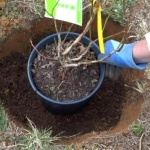
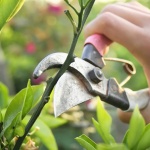
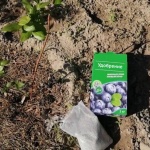
Disease and pest resistance
Bluecrop is weakly affected by pests or diseases, but preventive treatments will not be superfluous. For prophylaxis, Bordeaux liquid is enough in the spring, before the kidneys dissolve, and Fitosporin 2 times per season. High humidity or poor pruning can contribute to the spread of disease. Thickened bushes against a background of excessive moisture can suffer from gray rot - treatment with fungicides will be needed.
Blueberry plants are very popular with hares, so if these animals have access to the site, they are tied with spruce branches for the winter.
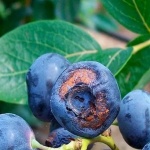
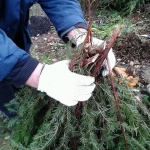
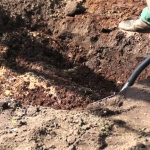

Review overview
The reviews are extremely positive, although, like all plants bred for a long time, the variety had the opportunity to gather criticism. Usually these are claims not to the variety, but to the quality of the planting material. Sometimes the taste of berries is criticized: they call it ordinary, or too tart. In the United States, this variety is the most common commercial cultivar. Domestic gardeners have only one complaint about it - the variety may freeze out. Otherwise, this is an amazing plant with excellent fleshy aromatic berries, placers of which are insanely pleasant to collect. Unfortunately, blueberries are still a rarity in Russian gardens, so gardeners are just trying to grow even stellar varieties.
